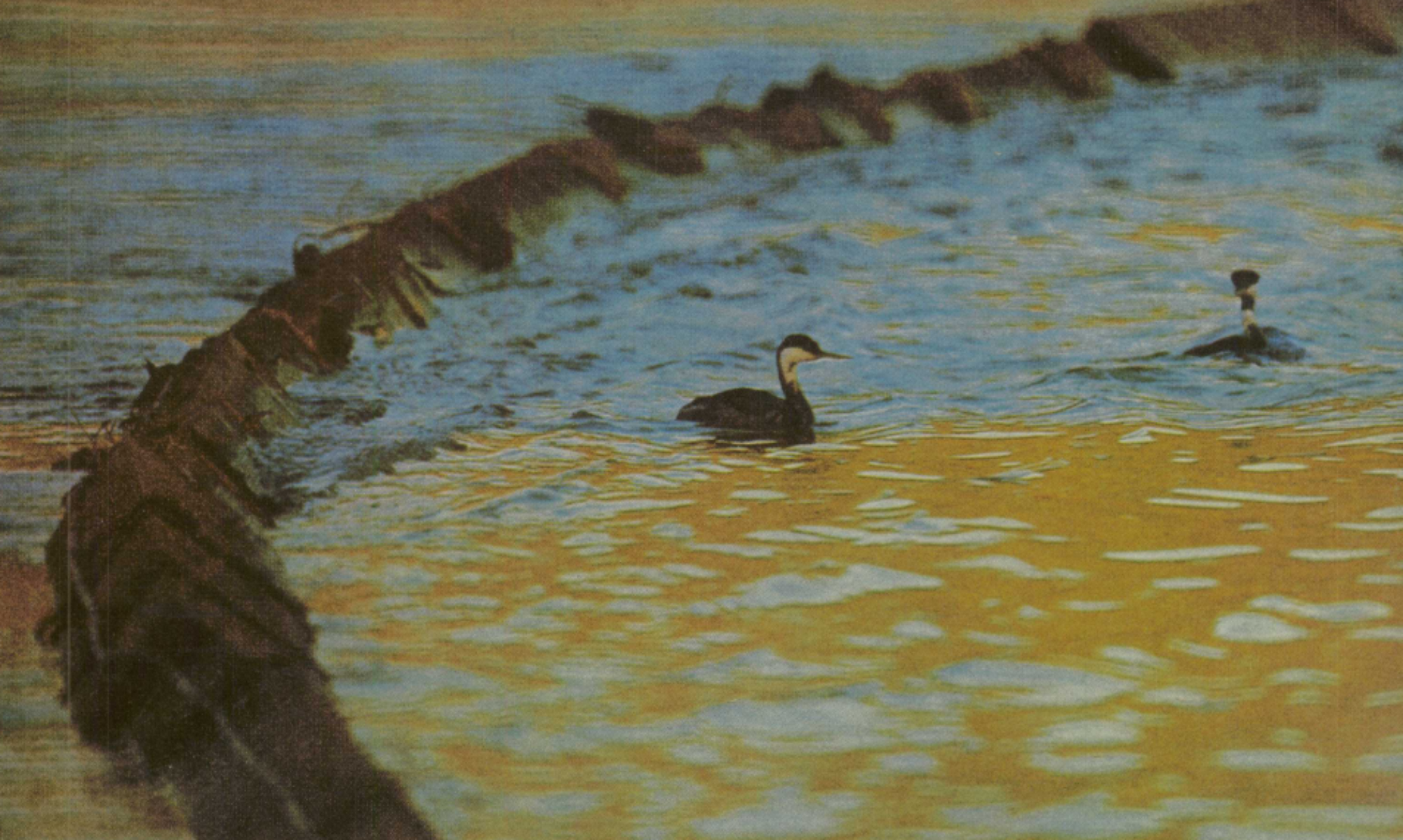Back in about 1975, the Canadian Wildlife Service invited IBRRC up to their regional offices in Winnipeg to instruct several agents in the cleaning and aftercare of oiled water birds. Alice and i naturally picked ourselves as the training team. As Alice and volunteers prepared the instructional materials, i worked at finishing the ‘portable’ bird dryer i invented. Well, it was at least close to portable.

The circular aluminized cloth duct is connected to a sheet metal cylinder hiding a blower, an array of 220 volt heating coils, and a Fenwall thermostatic switch. The smaller cloth ducts branch off and terminate with a heater register so that the flow of warm air can be controlled. Sheet metal pans clip to the registers.
Plug in the alligator and the normally deflated duct-work bulges out with warm air. The result: a pudgy silvery alligator with ten tubular legs ending in rectangular feet. Of course, one of our volunteers grabbed a marking pen and put eyes on the alligator. Open a register, put a plastic milk crate holding a wet bird on a pan and – voila – it becomes a bird dryer capable of drying ten large birds at a time.
Portable? Unclip all ten pans from the ductwork, nest them together, and put them into a zippered bag. Unclip the ductwork from the sheet metal heater/blower, roll it up, and put it in a second zippered bag. Result: three manageable pieces of ‘luggage’ that we checked at the airport on our way to Winnipeg. The milk crates? They were supplied by the folk in Winnipeg.
Alice and i were delighted with our flight on Frontier Airlines after changing planes in Denver. We had good legroom, great service and a delicious dinner. The flight stopped briefly in Pierre (pronounced “Peer”), South Dakota to drop off and pick up a few passengers. The terminal was about the size of a 7-11 store and the runway looked too small for our jet airliner. (I imagine it is much different now.)
We were met at the Winnipeg airport by a very friendly Wildlife Service officer who helped with our personal luggage and the three pieces of bird dryer. It was almost dark outside but the air temperature was surprisingly warm. He drove us to a comfortable hotel where they had reserved two rooms.
He picked us up from the hotel in the morning and soon we were through the gates and into the Canadian Wildlife Service facility. We decided to put the bird dryer in a wide driveway between garages and near to a 220 volt outlet. Our host gave us two plastic milk crates that he had rounded up at our request. We set out our instructional materials in a nearby meeting room and soon we were introducing about a dozen men from all over Canada to our craft of cleaning and caring for oiled birds.
At one of the classroom breaks, i went out to the three pieces of bird dryer to put it all together. It went great. It went fast but i was dressed too warmly and sweat dripped off my nose as i worked. I plugged it in, the ductwork inflated, the heating coils glowed red and dimmed, glowed red and dimmed as the Fenwall switch kept the temperature around 39° Celsius, just a degree below the body temperature of birds. This would be our first chance to show off this Rube Goldberg creation to the outside world. I smiled proudly, unplugged the contraption, and rejoined Alice in the meeting room.
After a cafeteria lunch at the facility, we finished up classroom instruction in another hour. Our students were seasoned professionals with excellent questions for us. All in all it went very well. Now it was time for the bird dryer demo. The students surrounded the dryer as i explained how it could be disassembled, transported, and reassembled. Then i plugged it in; the ductwork bulged up and air blew into the two pans and up through the two milk crates while the other pans were closed off.
The heating coils refused to glow red. Embarrassed at the failure, i unplugged the dryer, unclipped the large duct from the big sheet metal cylinder and checked the wiring. All looked good. Sweat rolled into my eyes as i clipped it back together and plugged it in again. The fan inflated the cloth duct-work but still nothing from the heating coils. I was so bummed. Resignedly, i explained that the Fenwall switch had been calibrated to keep the temperature at about a degree Celsius below the body temperature of birds but somehow, for the first time, it just refused to work.
One of the students spoke up. “Doesn’t that mean it’s supposed to shut off between 102° and 103° Fahrenheit?”
“Yes. That’s exactly correct,” i answered.
“Well hell. It’s gotta be at least 103° out here today.”
Oh.
